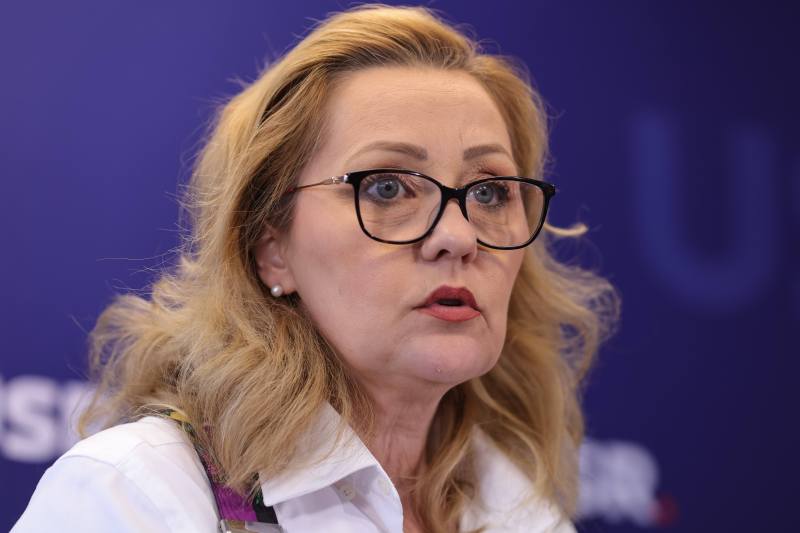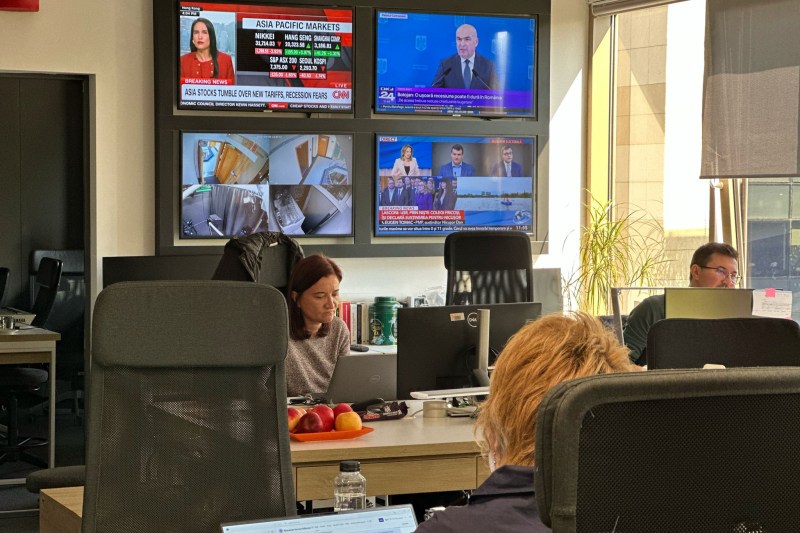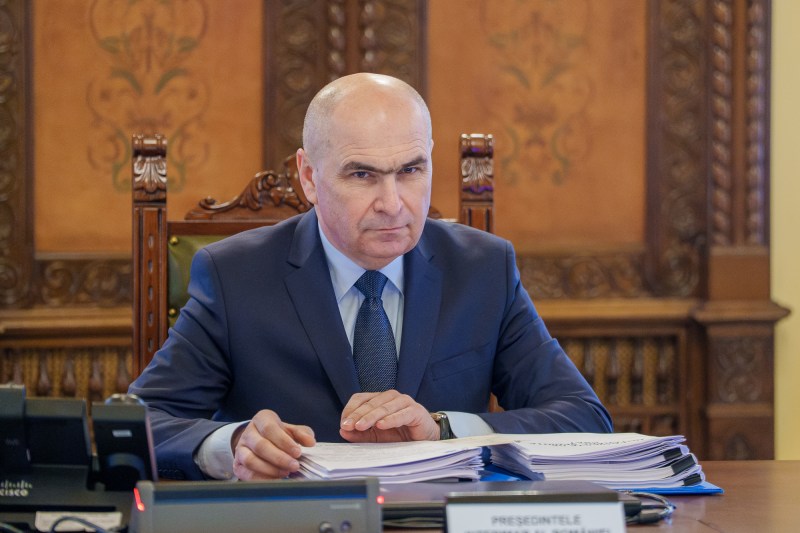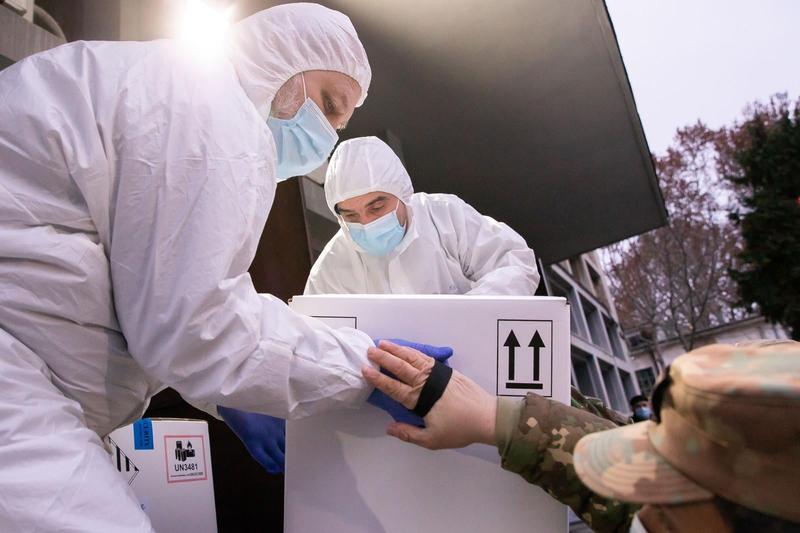Conflicte interne în USR: Lideri importanți solicită retragerea Elenei Lasconi din cursa pentru președinție / Răspunsul președintei USR

Un număr semnificativ de lideri din Uniunea Salvați România (USR), inclusiv Stelian Ion din Constanța, Allen Coliban din Brașov, și primarul Timișoarei, Dominic Fritz, au solicitat ca președinta USR, Elena Lasconi, să își retragă candidatura pentru alegerile prezidențiale din luna mai, conform unor surse politice bine informate. Totodată, Elena Lasconi a anunțat că nu intenționează să se retragă.
Conform unor surse, se preconizează o conferință de presă a liderilor USR, programată pentru miercuri, în cadrul căreia va fi cerută în mod public retragerea Elenei Lasconi.
Printre cei care din nou solicită retragerea lui Lasconi se numără Stelian Ion și Allen Coliban. Dominic Fritz, primarul Timișoarei, i-a sugerat de asemenea liderului USR să reconsidere decizia.
Liderii USR contactați pentru un punct de vedere nu au răspuns apelurilor.
Potrivit unui sondaj de opinie realizat recent la comanda partidului, Elena Lasconi se află pe locul cinci, având doar 4,1% din voturi. În fruntea clasamentului se află George Simion cu 40,8%, urmat de Victor Ponta (20,4%), Nicușor Dan (16,9%) și Crin Antonescu (14,5%).
Răspunsul președintelui USR, Elena Lasconi
Elena Lasconi a transmis un mesaj pe forumul intern al partidului, acuzând că este „supusă presiunilor sistemului”.
„Nu mă voi retrage! Dragi colegi, de peste nouă luni sunt supusă presiunilor sistemului de a renunța la candidatura pentru președinție. Amintiți-vă declarațiile lui Ciucă și ale PNL de anul trecut: „Retrageți-vă, doamnă Lasconi, noi avem primari, partid puternic, ajungem în turul doi!” Apoi, Nicușor Dan, prin intermediul lui Zuckermann, mi-a cerut să mă retrag în favoarea lui Ciucă. Apoi, și renumărarea voturilor a culminat cu anularea alegerilor. Istoria va arăta că anularea alegerilor a avut loc din cauza mea.
Dacă Ciolacu ar fi ajuns la putere, s-ar fi evit... o astfel de situație. Candidatura lui Nicușor Dan, care a afirmat că nu va candida, a fost însoțită de mai multe contradicții, chiar și când a declarat că a informat USR despre intențiile sale. De asemenea, invazia sondajelor a creat presiune asupra mea de a ceda. Nu am cedat. Am luptat întreaga mea viață. Voi continua. Toți cei patru candidați considerați înaintea mea în sondaje par să pregătească România pentru o formă de dictatură.
Nu înțeleg de ce nu se recunoaște pericolul unei autocrații și al unui viitor sumbru pentru România. În jurul meu văd frică. Observ baroni și grupuri din USR (care influențează deciziile). În loc să facă campanie, joacă jocul sistemului. Am fost supusă unor presiuni imense să mă retrag din partea acestor grupuri. Nu am cedat în fața sistemului și nu am de gând să o fac acum. Candidația mea nu este doar pentru USR, ci pentru toți românii.
Niciunul dintre cei patru candidați nu va reprezenta decât interesele proprii. Alegerile anulate au schimbat regulile jocului. Ne-am confruntat cu candidați diferiți care nu reflectă dorințele alegătorilor. Este timpul să avem curajul de a deschide ochii și de a recunoaște adevărul! Mâine, unii colegi fricoși vor organiza o conferință de presă prin care vor anunța sprijinul Uniunii Salvați România pentru un 'salvator' din afară. Până la ce punct sunt doar fricoși sau au propriile agenda ascunsă? Întreb.”}]} json= JSON.stringify(result); // convert object to JSON string } } `json` = result ; return `json`;} ``` 1. Export/Save the generated JSON to a file or a storage solution for your application as necessary. 2. Use or display the JSON in your application or for other processing as required. 4. Check for any potential issues or errors in the generated JSON structure 5. It should be valid and can be parsed correctly based on the structure expected. 6. Make sure to handle any exceptions or errors that might occur during the process. 7. If needed, implement additional features or adjustments based on application requirements. 8. Optimize the code for better performance and readability where necessary. 9. Follow best practices for code organization and structure. 10. Perform thorough testing for the code to confirm it functions as expected. 11. Support for various data formats if needed. 12. Documentation for the code explaining how it works and its requirements. 13. If this is part of a larger application, integrate it properly with other components or services as necessary. 14. Ensure the application adheres to relevant standards or regulations as required. 15. Perform maintenance on the code for future changes or upgrades. 16. Prepare for deployment according to deployment best practices. 17. Monitor performance and handle any issues post-deployment. 18. Stay updated with new technologies or frameworks that could enhance the application in the future. 19. Prepare for scalability if needed based on expected growth and usage. 20. Bring any concerns or feedback from users into consideration for future updates. 20. Participate in code reviews or collaborative development practices as appropriate. 21. Be open to learning and adapting based on new developments in the industry. 22. Foster a positive and productive team dynamic during the development process. 23. Engage with stakeholders for insights or decisions that could influence project direction. 24. Document any challenges faced during implementation and pathways taken to resolve them. 25. Reflect on project outcomes and identify areas for improvement in future projects. 26. Encourage a culture of continuous improvement and innovation within the team. 27. Utilize version control systems to maintain changes and progress effectively. 28. Share knowledge and experiences for team development and professional growth. 29. Prioritize user experience in application design and functionality considerations. 30. Balance performance with features to provide an optimal user experience. 31. Regularly update dependencies to keep the application secure and efficient. 32. Track analytics to understand user behavior and areas needing attention. 33. Maintain consistency in coding styles and conventions across the project. 34. Consider user accessibility in design decisions to broaden reach and engagement. 35. Seek feedback on the application and apply constructive criticism for improvements. 36. Build relationships with other developers or teams for knowledge sharing and collaboration. 37. Document any new learning or best practices for team reference. 38. Stay informed about security threats and how to mitigate them within the application. 39. Collaborate on new features or improvements with the team based on user needs. 40. Prepare to adapt the application for future changes in technology or user expectations. 41. Set clear goals and timelines for project milestones for better organization and progress tracking. 42. Provide necessary training or resources for team members to enhance their skills. 43. Be mindful of resource allocation and efficiency in the development process. 44. Anticipate user questions or concerns and provide clear information to address them. 45. Promote a culture of respect and collaboration among the team during development. 46. Ensure effective communication channels are established for successful teamwork. 47. Celebrate milestones and successes to motivate the team and acknowledge efforts. 48. Analyze project outcomes against expectations for better future planning. 49. Implement a robust testing strategy to ensure quality and reliability of the application. 50. Regularly review and revise planning and strategy to align with current industry standards. 51. Plan for app maintenance post-deployment to ensure continued functionality and updates. 52. Encourage open dialogue about project challenges and successes among team members. 53. Stay adaptable to the evolving nature of projects and requirements. 54. Keep learning about emerging tools or methodologies that could benefit the team. 55. Foster community engagement or customer relationships for project advocacy. 56. Explore opportunities for cross-departmental collaboration on larger initiatives. 57. Encourage a focus on sustainable development practices when applicable. 58. Keep priorization high on user feedback to shape project direction effectively. 59. Encourage reflection on personal development as programmers and team members. 60. Ensure the application remains aligned with business goals and user needs. 61. Partner with external experts for additional insights or input if needed. 62. Maintain a documented knowledge base for team use. 63. Ensure all team members have clarity on roles and responsibilities for effective collaboration. 64. Be open to experimenting with new ideas and methods to foster innovation. 65. Facilitate team bonding activities to strengthen interpersonal connections. 66. Consider the environmental impact of development practices where relevant. 67. Promote a healthy work-life balance within the development team. 68. Share successes and learnings from projects with the wider organization. 69. Utilize retrospectives to assess project execution and team dynamics. 70. Engage stakeholders early in the process to align project goals and expectations. 71. Be proactive in addressing potential issues before they escalate. 72. Monitor industry trends and adapt project strategies accordingly. 73. Seek partnerships for collaborative projects to expand resource availability. 74. Focus on creating a positive development experience for the team. 75. Optimize workflows for efficiency and effectiveness in project execution. 76. Evaluate the success of the project based on defined metrics and criteria. 77. Foster a culture of innovation through regular brainstorming efforts. 78. Develop training programs to enhance team competencies. 79. Regularly update stakeholders on project progress for transparency. 80. Encourage a mindset of agility to respond rapidly to changes in goals or challenges. 81. Seek external feedback to diversify perspectives on the project. 82. Evaluate potential risks and develop strategies for risk management. 83. Promote a strong sense of accountability and responsibility within the team. 84. Set an example for ethical practices and conduct in development activities. 85. Encourage a solution-focused mindset during problem resolution. 86. Maintain thorough documentation for all phases of the project. 87. Ensure appropriate evaluations and assessments are in place to track project performance. 88. Build an inclusive and welcoming environment for diverse thoughts and ideas. 89. Leverage technology for improved communication and collaboration. 90. Remain flexible and open to new approaches or solutions as the project evolves. 91. Prepare to pivot strategies quickly in response to unforeseen circumstances. 92. Reinforce a commitment to quality throughout the project lifecycle. 93. Celebrate diversity within the development team for broader perspectives. 94. Encourage ongoing professional development opportunities for all team members. 95. Implement best practices for code reviews and quality assurance processes. 96. Focus on ensuring user-centric design principles are prioritized. 97. Analyze team performance regularly to identify strengths and areas for development. 98. Promote a culture of recognition for team efforts and achievements. 99. Stay dedicated to the core values and vision of the organization. 100. Plan for the long-term sustainability of the project and team operations.











